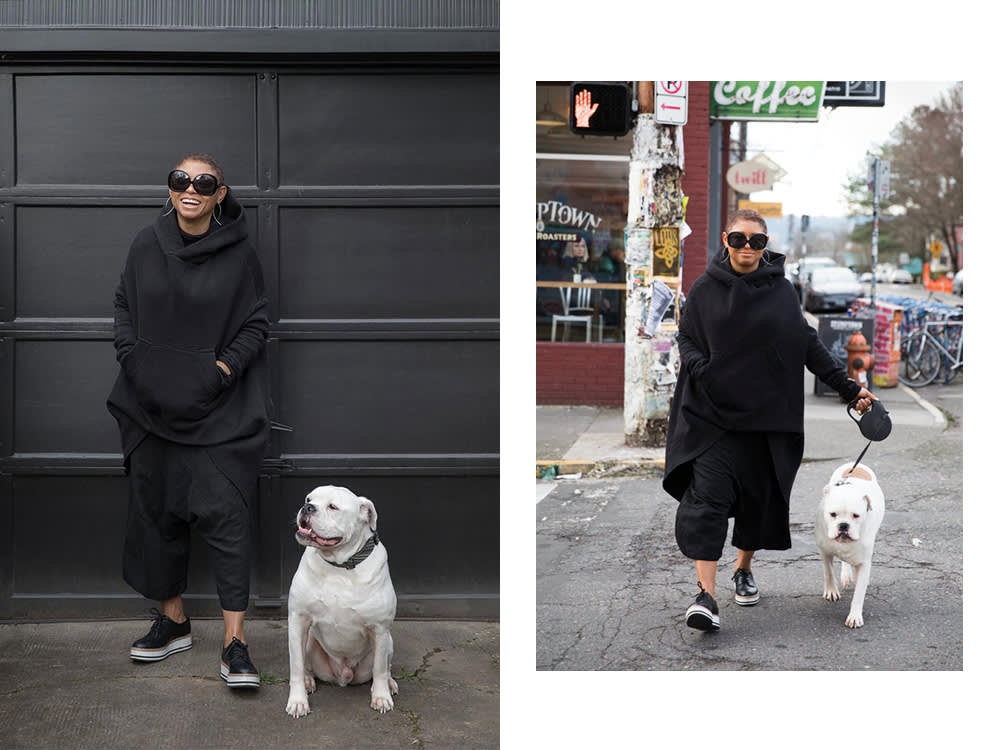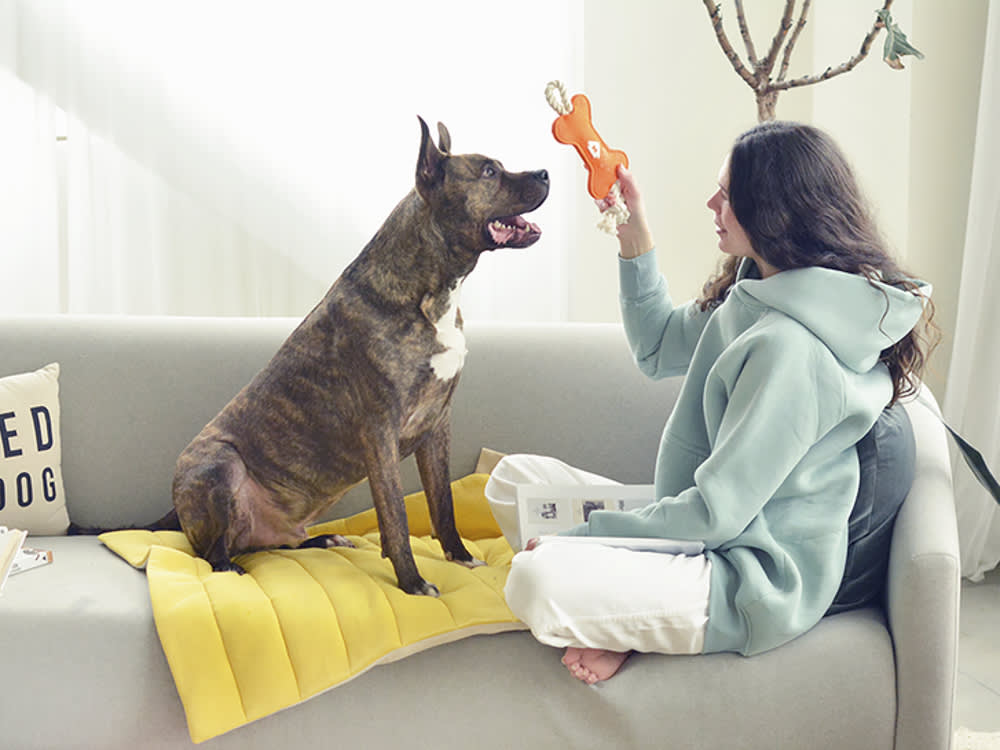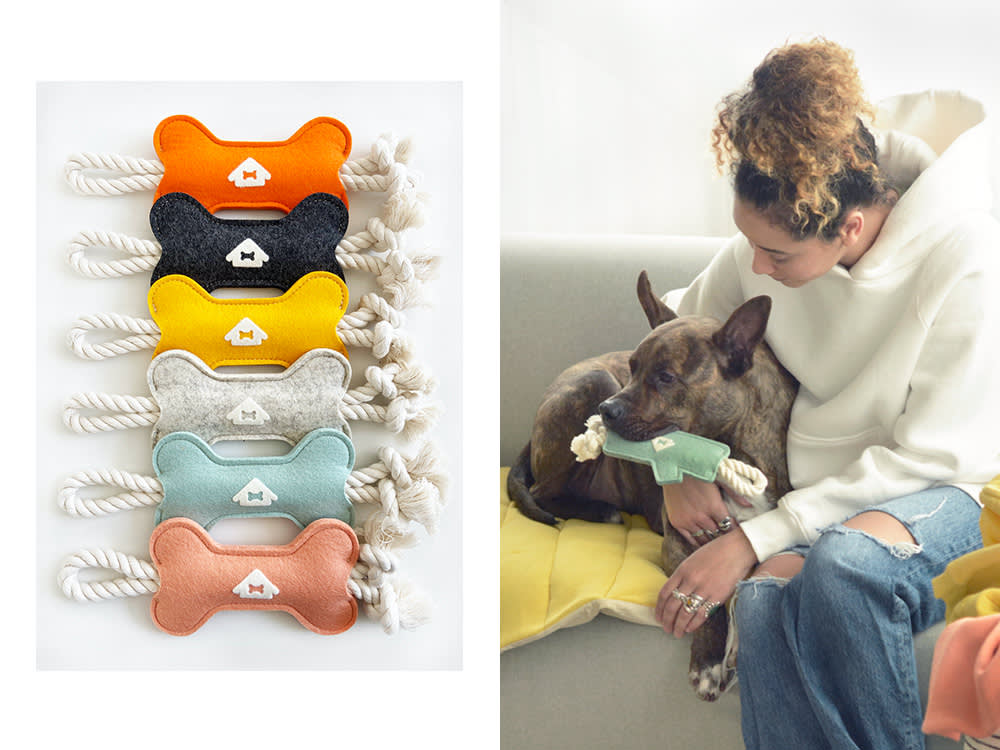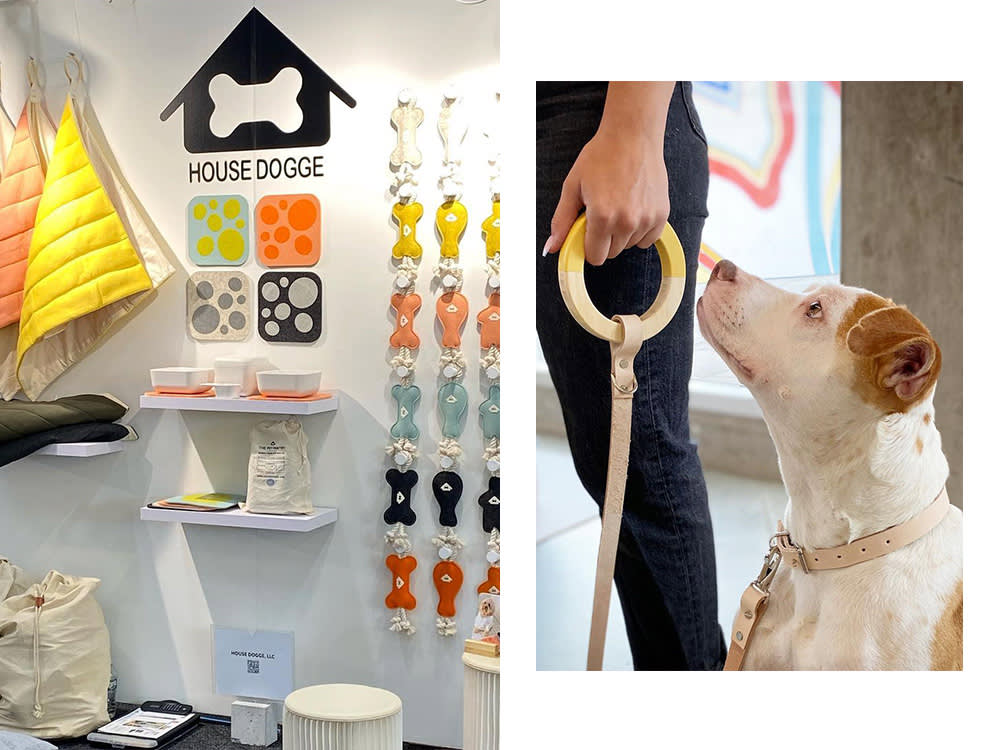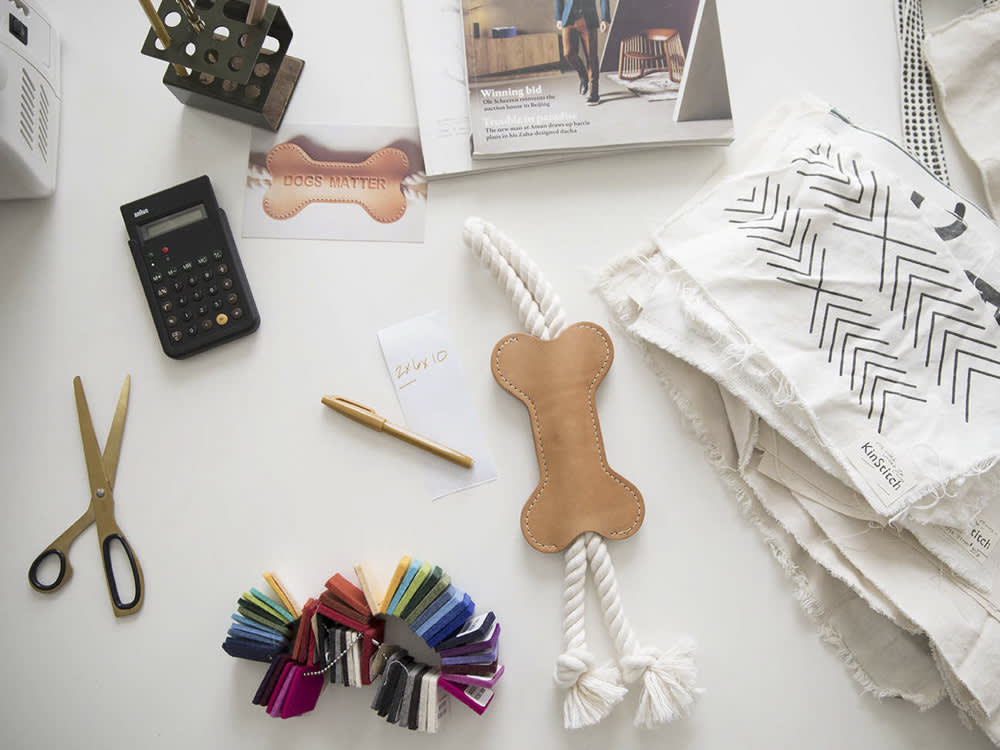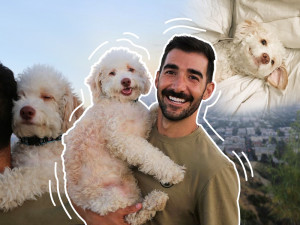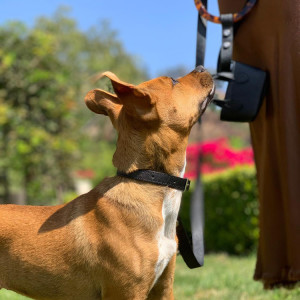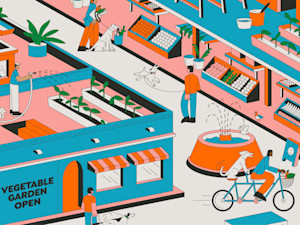House Dogge Makes Sustainability Feel Effortlessly Cool
Former Nike Design Director Angela Medlin on applying her streetwear savvy to eco-conscious pet products.
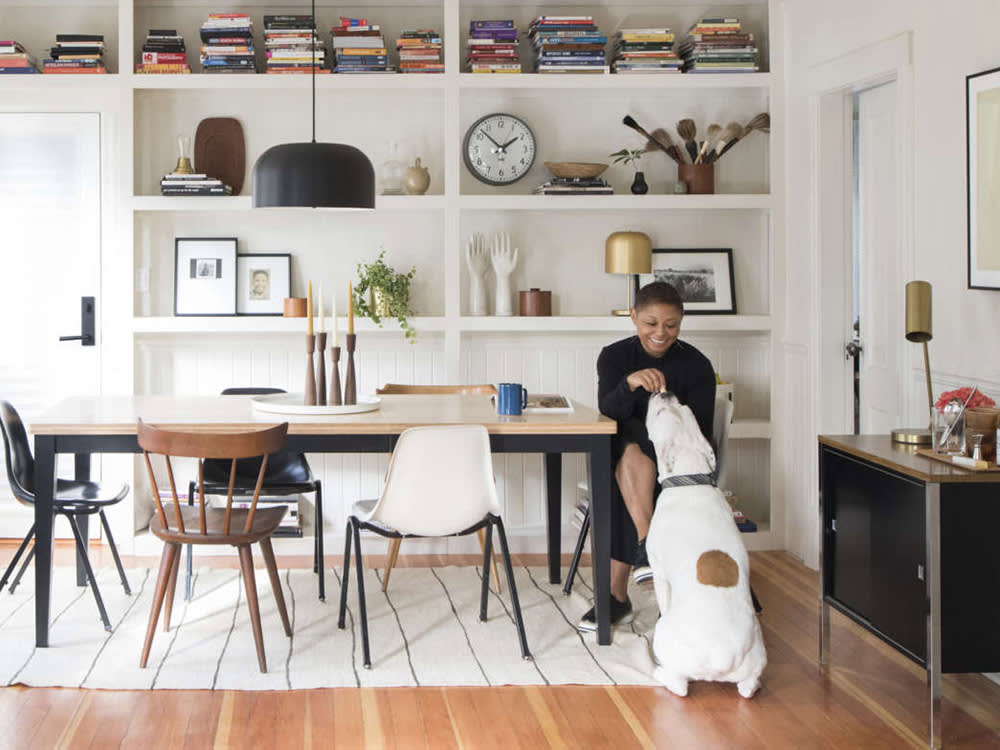
Share Article
The pandemic proved to be a personally transformative experience for many of us. While stuck at home for months with little to do other than work and workout, we learned two crucial facets of life: The benefit of having a job you feel passionate about and the importance of comfort. This was not news to Angela Medlin, who, as the founder of House Doggeopens in new tab, has been prioritizing these values for years.
As an apparel designer and director at several major brands, from Nike to the North Face, Medlin learned a thing or two about comfort. In 2017, inspired by her late Olde English Bulldogge, Wubbi, she started House Dogge to change the “perception that eco-conscious and eco-friendly products are bland” and “to show that eco-friendly products can be colorful and have texture — their quality can be elevated.”
It wasn’t long before the Portland-based brand’s customizable hoodies — part of a collection that also includes biodegradable collars and leashes, and nontoxic toys — landed on Oprah’s Favorite Things list. We spoke with Medlin about her minimalist aesthetic, the challenge of sourcing sustainable materials, and donating to dog rescues.
What inspired you to start House Dogge?
A couple of things, starting with my passion for design. I had a career as an apparel designer for 30-plus years working with global brands like Nike, Adidas, the North Face, and Levi Strauss. So there was a passion for design, but there was also my passion for the wellbeing of dogs. I grew up with dogs all of my life. They were family members since I was a kid. Even as an adult, I had my ride-or-die dogs, and in every place that I’ve moved to or lived in, I always thought about what I would need for them in that new space or home.
Wubbi was the last dog that I had. He passed away a couple of years ago. He was a major inspiration for the brand — just observing him after I took the big leap from corporate. I would watch what he would do in the home and what he needed to be comfortable in the home and the things that we did — the essentials. Things that would help us throughout the day. I wanted to bring that to life in a brand.
What influence did your design background have on House Dogge’s aesthetic?
A lot, actually. Starting from when I was in college, then going into the industry, one of the things that was drilled into my mind was how to get the most out of a little. If your budget was really small in the apparel industry, you had to make that look more interesting and have more perceived value. That’s something that always stuck with me.
My mentor also said, “How can you express what you want to express using the least amount of information?�” That spoke to the minimalist aesthetic that I have. I also wanted to make products that are affordable for anyone, and find a way to make sustainability look beautiful. In general, there’s a perception that eco-conscious and eco-friendly products are bland. So I wanted to show that eco-friendly products can be colorful and have texture — their quality can be elevated.
What other factors do you consider when creating products?
I consider, how is this going to affect the dog? How is it affecting the home environment? How’s it affecting humans, in general? I just look a little deeper into a product’s impact. Dogs walk around with things in their mouths all the time so whatever they’re carrying around, you want to make sure it’s nontoxic and safe. I’ve had a few dogs who passed away from cancer, and that was one of the things I considered when I started building products. I wanted to make sure I wasn’t contributing to that, so I do as much as I can to make sure our products are good for all involved.
Speaking of “good for all” how does House Dogge strive for sustainability?
Sustainability is a huge category. At least 80% of House Dogge’s product offering is natural, replenishable, or eco-conscious in some way. The goal is to be 100% sustainable by 2025. Currently, as a small start-up brand, it is not possible to achieve that status due to cost and MOQ requirements for alternative materials. But we can all do what is possible to build in that direction. That means we do what we can with what we have now. And what that means is you can have sustainable products that are recycled — so existing materials that don’t go into the landfill — and you can have upcycled material, meaning repurposing a product that already exists and give it new life. There are also natural, nontoxic materials that don’t contain PVC or BPA. I try to pull from those resources are much as possible.
With you running the show solo, do you ever face challenges in the production process?
I really try to use that as a filter, and the good part about it just being me is that I have a lot of experience working sustainably. So if I have to pivot in one area, I know that I can find those sustainable attributes somewhere else. But being a small business owner, it is challenging to find sustainable materials. It can be challenging to find companies, manufacturers, or factories that want to work in small-batch production. It’s often more expensive.
One of your original products, the matching, customized hoodies, are still pretty popular. Why hoodies over other dog clothes?
The hoodie was actually my favorite piece of clothing for years. I practically live in it now, especially during the pandemic. Hoodies have always been a part of the athletic industry, which is the majority of my design experience. I had this favorite piece and I thought, “This is like wearing a hug every day; why not bring this comfort to the pet industry?” I wanted to do it for both dogs and humans, so you can get a custom hoodie for your dog and you can also buy one for yourself. Then you can both look really sweet and comfortable going for a walk.
It’s the perfect pandemic piece.
Isn’t it? I originally called it the “House Hoodie” because I’d say it’s the hoodie you want to live in. But it’s all about comfort and shouldn’t be any less for dogs.
It even landed on Oprah’s Favorite Things list.
Oh my gosh. That was a pivotal moment in so many ways. When I started thinking about the brand and creating something that was authentic to myself, she was one of the first people I thought about because one of her quotes about doing the thing that is authentic to you inspired me. So I always had her in mind. I knew she loved dogs and I had hoped to one day introduce my product to her. When that opportunity came, that’s exactly what I did.
How did you react after hearing the news that you made the list?
When they announced the list, it was the most insane moment of surprise I’ve had in a long time. I tell people I screamed like a banshee because I just wasn’t expecting it. Oprah was just really gracious with her time. She talked with me about the brand, as well as her dogs, and was so understanding that my dog had passed away, offering condolences. It was just a really sweet and validating moment to be chosen for that list.
For the business, it put us on the map. It introduced House Dogge to the world and sales went up 3,000%. Now I want to make sure that I’m continuing to grow the brand authentically, adding products that align with how we got our first recognition, because you can’t live off Auntie Oprah forever.
A percentage of each House Dogge purchase is donated to dog rescues. Which organizations do you support?
Regularly, I donate to an organization here called Northwest Dog Projectopens in new tab. They rescue senior dogs, dogs who have been neglected or abused, then nurse them back to health and find them homes. The Pongo Fundopens in new tab is another one that I’ve worked with locally. They want to make sure that anyone who has a dog is able to take care of that dog. They have a food bank where they invite volunteers to come in and package up meals to hand out to those in need.
What’s next for House Dogge?
There are over 126 million households with pets. 70 million of those are dogs. Dogs living as family members in the home is an area I want to focus more on, so the products that are coming up will start to address the needs of dogs and people in each room of the house.
That’s a great teaser. Maybe more importantly, do you have any plans to adopt another dog?
I do have plans to adopt another dog. However, I want to make sure that I have available time to give that doggy. Right now, I’m still in crazy startup mode. While my dog can hang out with me wherever I am at this point because I’m working in my own studio, I just want to be able to give them the attention they need, so I’ll know when that time is.
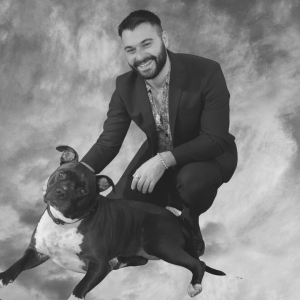
Sean Zucker
Sean Zucker is a writer whose work has been featured in Points In Case, The Daily Drunk, Posty, and WellWell. He has an adopted Pit Bull named Banshee whose work has been featured on the kitchen floor and whose behavioral issues rival his own.
Related articles
![Hiker and dog overlooking the top of a mountain]()
8 Ways to Be a More Eco-Friendly Pet Parent in 2025
Expert tips to help reduce your pet’s carbon footprint. (Pawprint? You get it.)
![Collage of Dave Coast and his dog with white outlines]()
Dave Coast’s Favorite Sustainable Dog Products
The LA wellness guru (and his Poodle Stanley) vouches for recycled poop bags, bottle-opener collars, cruelty-free shampoo, celeb-approved dog beds, and more.
![A dog wearing a vegan collar.]()
Shaya’s Vegan Collection is Leading the Way
This eco-friendly update to the brand’s Italian-made walking kit is as notable as the celebrities who have been spotted rocking it.
![petaluma sustainable pet food the wildest mars]()
The Sustainable Pet Food Movement is Fired Up
From cricket kibble to miso mice, leading brands are exploring how sustainable pet food products can reduce carbon paw prints.
